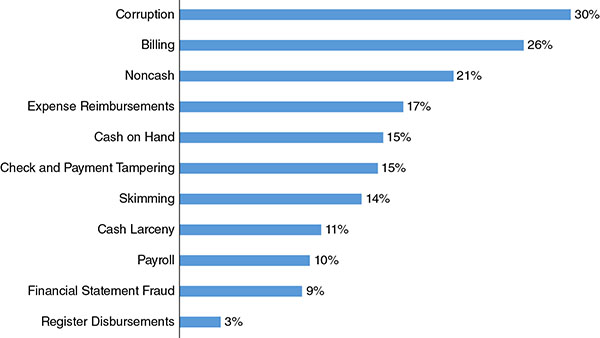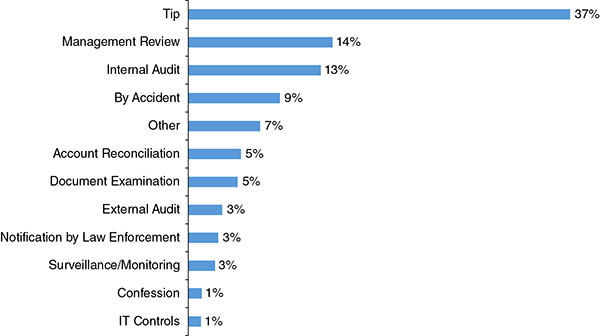CHAPTER 14United States

REGIONAL FRAUD TRENDS
The 2018 Report to the Nations on Occupational Fraud and Abuse issued by the Association of Certified Fraud Examiners (ACFE) includes 1,000 cases from the US that were investigated between January 2016 and October 2017. These cases caused a median loss of US $108,000 per case.
As noted in Exhibit 14.1, corruption is the most common form of occupational fraud committed in the US; 30% of the cases analyzed involved some form of corruption. Billing schemes are the second most common category of occupational fraud, occurring in just over one-quarter of the cases. In addition, fraud schemes in the US are more than twice as likely to be detected by a tip as by any other means (see Exhibit 14.2).

Exhibit 14.1 Scheme Types – United States

Exhibit 14.2 Initial Detection Method – United States
The 2018 Report to the Nations also examines the anti-fraud controls that were present at victim organizations at the time the frauds being analyzed were committed. Exhibit 14.3 shows that a formal code of conduct is the most commonly implemented anti-fraud control among victim organizations in the US, followed by external audits of financial ...
Get International Fraud Handbook now with the O’Reilly learning platform.
O’Reilly members experience books, live events, courses curated by job role, and more from O’Reilly and nearly 200 top publishers.

